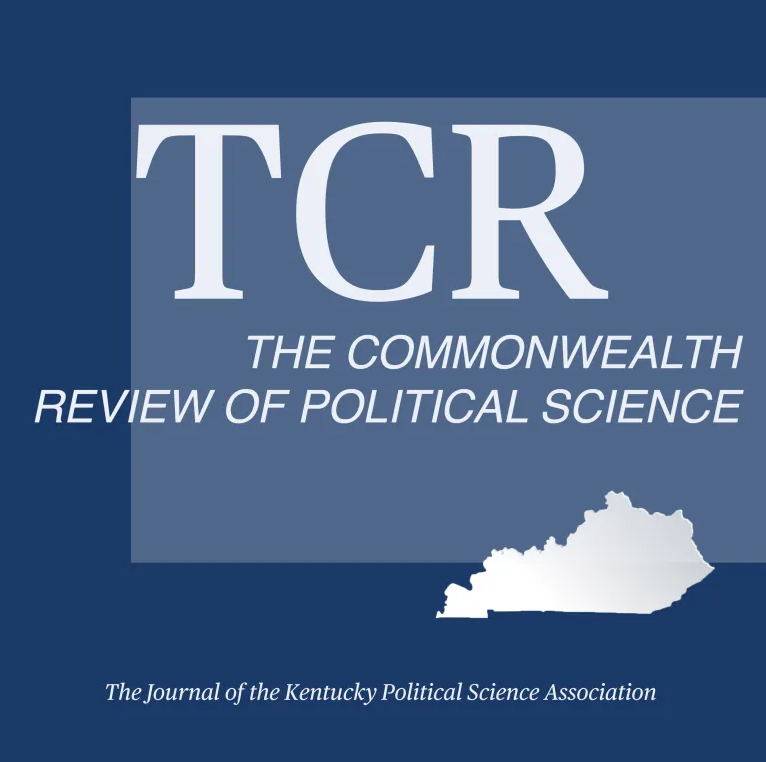Commonwealth Review of Political Science

Policies
Contents
- Philosophy of Commonwealth Review of Political Science
- Who Can Submit?
- General Submission Rules
- Peer Review
- Formatting Requirements
- Replication Policy
- Rights for Authors and MSU Digital Commons
- Personal Use Exceptions
Philosophy of Commonwealth Review of Political Science
For more information, please see Commonwealth Review of Political Science Aims and Scope page.
Who Can Submit?
Anyone may submit an original article to be considered for publication in Commonwealth Review of Political Science provided he or she owns the copyright to the work being submitted or is authorized by the copyright owner or owners to submit the article. Authors are the initial owners of the copyrights to their works (an exception in the non-academic world to this might exist if the authors have, as a condition of employment, agreed to transfer copyright to their employer).
General Submission Rules
Submitted articles cannot have been previously published, nor be forthcoming in an archival journal or book (print or electronic). Please note: "publication" in a working-paper series does not constitute prior publication. In addition, by submitting material to Commonwealth Review of Political Science, the author is stipulating that the material is not currently under review at another journal (electronic or print) and that he or she will not submit the material to another journal (electronic or print) until the completion of the editorial decision process at Commonwealth Review of Political Science. If you have concerns about the submission terms for Commonwealth Review of Political Science, please contact the editors.
All submissions are to be made via the online submission system. If you have any problems with online submission, please send your manuscript files by email. Authors should prepare a single document (MS Word) including an abstract of 100-150 words, the text, references, endnotes, tables, figures and appendix materials. We currently don't accept PDF files. Please translate them into MS Word before you submit them. All information that may indicate the identity of authors should only be included in the cover page. Manuscripts should not exceed 10,000 words (including notes, references, endnotes, appendixes, tables, and figures).
Authors should prepare a cover page that includes (1) a biographical note of 50-100 words introducing each contributor's education background, current affiliations, research interests,recent publications and full contact details (email, phone, fax and postal); and (2) an acknowledgement about institutions which have financially supported the research of their submissions.
After an author submits an article, s/he should not make changes to the submission. Changes may be made via email during the peer review process.
Peer Review
All submissions will be judged by the editors as appropriate for peer review or being rejected directly within eight weeks. At least two reviewers will be invited for those papers subject to anonymous peer review. These papers will be evaluated by the peer-reviewers on the basis of their creativity, quality of scholarship, and contribution to advancing the understanding of the respective area of political science. The editors aim to communicate a first decision to the contributors within three months.
Formatting Requirements
All submissions must follow the APSA style manual. Please consult the American Political Science Association's Style Manual for Political Science.
All the text, bibliographic citations, and appendix materials in a manuscript must be double-spaced and printed in Times New Roman, 12-point font.
Tables and figures should not be embedded in the text but should be printed on separate pages at the end of the manuscript. Tables and figures should be consecutively numbered. Each table and figure must have a heading and be referred to in corresponding locations in the text.
Replication Policy
For empirical research with data sets, it is the author's responsibility to address the issue of data availability and replication in the first footnote.
Rights for Authors and Murray State's Digital Commons
Please refer to the Submission Agreement, accessible by clicking on Submit Article, then "Continue".
Personal-use Exceptions
The following uses are always permitted to the author(s) and do not require further permission from Murray State's Digital Commons provided the author does not alter the format or content of the articles, including the copyright notification:
- Storage and back-up of the article on the author's computer(s) and digital media (e.g., diskettes, back-up servers, Zip disks, etc.), provided that the article stored on these computers and media is not readily accessible by persons other than the author(s);
- Posting of the article on the author(s) personal website, provided that the website is non-commercial;
- Posting of the article on the internet as part of a non-commercial open access institutional repository or other non-commercial open access publication site affiliated with the author(s)'s place of employment (e.g., a Phrenology professor at the University of Southern North Dakota can have her article appear in the University of Southern North Dakota's Department of Phrenology online publication series); and
- Posting of the article on a non-commercial course website for a course being taught by the author at the university or college employing the author.
People seeking an exception, or who have questions about use, should contact the editors.

